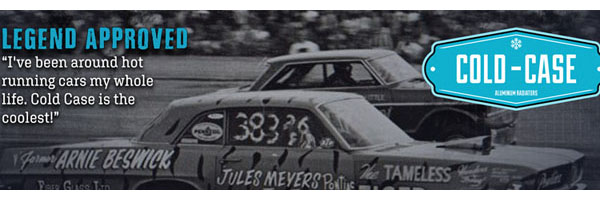My solution would have been Cathodic Protection for cars (trucks), but...
http://www.clihouston.com/knowledge-...-for-cars.html
Interesting to read this is "Snake Oil" for automobiles:
Electronic rust prevention for cars
The basic principle of cathodic protection is very simple. A metal dissolution is reduced through the application of a cathodic current. Cathodic protection is often applied to coated structures, with the coating providing the primary form of corrosion protection. The CP current requirements tend to be excessive for uncoated systems.
The science of cathodic protection (CP) was born in 1824 when Sir Humphrey Davy made a presentation to the Royal Society of London and he succeeded in protecting copper against corrosion from seawater by the use of iron anodes. This first application of CP dates back to 1824, long before its theoretical foundation was established. Cathodic protection has probably become the most widely used method for preventing the corrosion deterioration of metallic structures in contact with any forms of electrolytically conducting environments, i.e. environments containing enough ions to conduct electricity such as soils, seawater and basically all natural waters. Cathodic protection basically reduces the corrosion rate of a metallic structure by reducing its corrosion potential, bringing the metal closer to an immune state.
Electronic corrosion protection for cars
To protect your precious vehicle you have become the perfect target of those snake oil merchants that prefer the green in your pocket than to sell you a honest service that achieves the intended purpose. No sweat, you can beat good old corrosion with a little magic powder and, of course, the green in your wallet. Here is something we have to say about the uselessness of these devices that go by different names, technical descriptions, glossy brochures, and glitzy Web sites.
Cathodic protection (CP), which is the real name of the technique these profiteers are trying to sell you, has been used with success to protect against corrosion on many structures and systems including sea going ships, buried pipelines, and even reinforced concrete. However, there is an area where the technique
has no chance to work, the protection of cars. Human nature being what it is, many entrepreneurs have tried to use the visible successes of CP to make money by offering car owners devices to achieve such protection. They typically offer these snake oil devices at a price that could be reasonable if it did indeed work. In reality, the gizmos they offer are a lost in the suckers pocket and a gain in the entrepreneur crooks bank account. And watch out, they will disguise the same old gadgets with new patents and glitzy technical names, even throwing in a microprocessor.
The causes: These gadgets do not work
One has to understand the principle of CP to understand that the technique works by forcing a protective flow of electrons to the metal that needs protection. For this process to work, you need a complete electrical circuit to bring the electrons back. In the case of an outboard motor on a boat, the sea water completes the circuit. In the case of a bridge, the wet soil completes the circuit.
But in your car, the only way to complete the circuit on all the metal in your car is to drive into seawater or be buried in soil! There are various products on the market claiming to provide cathodic electrochemical protection to your car, just by injecting electrons into your metal work - but they don't work. Countries like Canada and the U.S.A. have actually got court orders to stop these products from being sold - simply because they don't work. In your car, there are lots of little nooks and crannies where dirt and/or water can collect. The rust happens not where the metal is dry, nor where the metal is wet - but at the interface between the wet and dry metal. So if you screwed a bunch of anodes right on the interface or one or two millimeters thereof, you would protect your car. But you would need thousands of these anodes over your car.
Modern car manufacturers often do a process called zinc electroplating on the entire chassis of the car. So long as the zinc is complete, the car will not rust. Your best bet is to regularly clean out all the drain holes so that the water can't collect, scrape off any mud that has collected so that metal does not rust away underneath the mud, and remove the leaves and dirt. And of course, once you've washed the car, you should always take it for a drive so that any trapped water can slosh out.
INTRODUCTION TO AUTOMOTIVE CORROSION
Electronic corrosion protection for cars
By the early 1990s more than 50 million automobiles were being manufactured worldwide annually. Leading manufacturing areas were Japan, the United States, and Western Europe. There was also significant production in Eastern Europe and Latin America. The automotive industry is so vast that it influences, directly or indirectly, most of the people on Earth.
In industrial nations the level of automobile production has become a barometer of the economy and is closely watched by political leaders and business analysts. Changes in auto production directly affect the large steel, aluminum, petroleum, and rubber industries and their suppliers and employees.
The corrosion of the most popular vehicle ever used in the history of mankind is a major concern to all of us. Unfortunately the corrosion problems are numerous and the solutions not well understood by the majority of car owners.
Corroded car in an embarrassing position
On a positive note, the number of people driving cars that are more then ten years old has risen from 32% to 44% in the last five years (circa 2004), which means that there are an awful lot of people out there that rely on the purchase of a used car to provide them with day to day transportation. In most cases a ten year old car has had at least two, possibly three owners. In some ways, it is a major credit to the car industry that cars now last so long. However, most manufacturers do not seem to care much what happens to almost half the population when the warranty expires. No doubt, the dealers all rub their hands with glee at the prospect of all those extra repairs and the parts manufacturers can look forward to a lot of extra sales in the after market.
This module will try to correct the difficulties associated with maintaining a car free of corrosion worries in the harshest conditions.
Cathodic protection works on cars
U.S. consumers, businesses, and government organizations own more than 200 million registered motor vehicles. Assuming the average value of an automobile is $5,000, the total investment Americans have made in motor vehicles can be estimated at $1 trillion. Since the 1980s, car manufacturers have increased the corrosion-resistance of vehicles by using corrosion-resistant materials, employing better manufacturing processes, and designing corrosion-resistant vehicles. Although significant progress has been made, further improvement can be achieved in corrosion resistance of individual components. The total annual direct cost of corrosion is estimated at $23.4 billion, which is broken down into the following three components: (1) increased manufacturing costs due to corrosion engineering and the use of corrosion-resistant materials ($2.56 billion per year), (2) repairs and maintenance necessitated by corrosion ($6.45 billion per year), and (3) corrosion-related depreciation of vehicles ($14.46 billion per year).














 Linear Mode
Linear Mode



